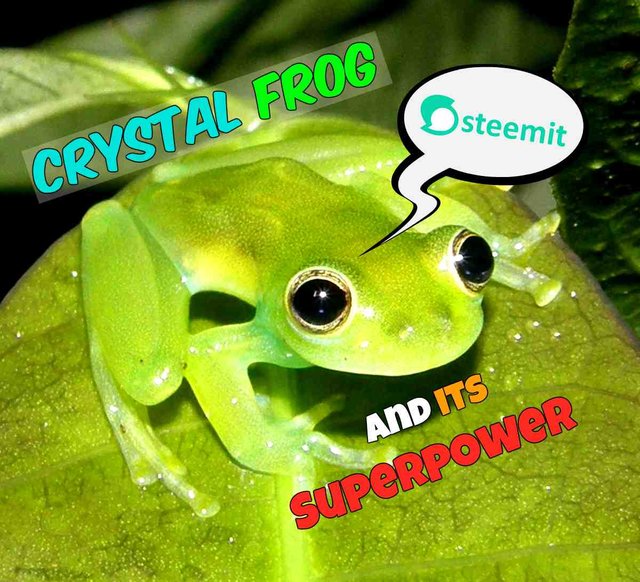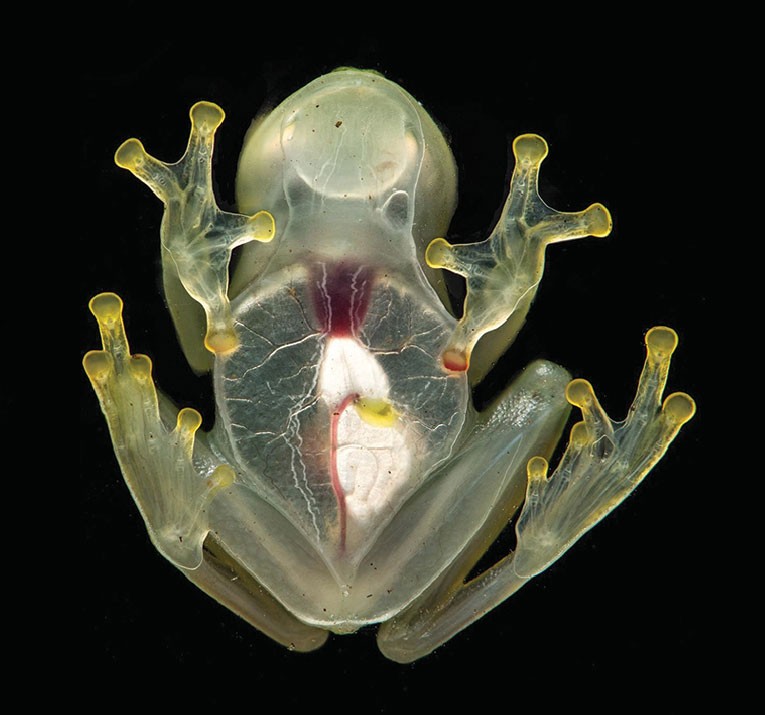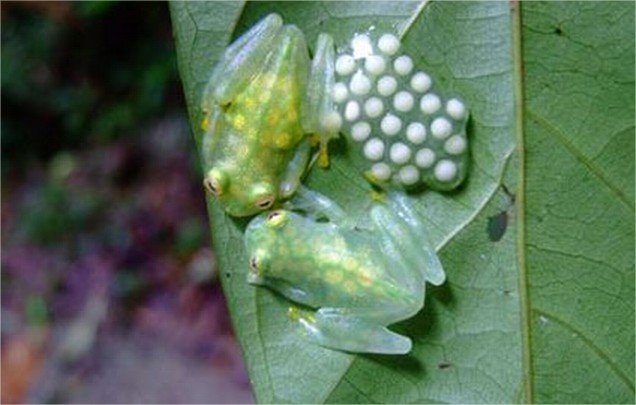Crystal Frog - And its SUPERPOWER
Hello to all my friends of Steemit, in this opportunity as you can see in the title I will tell you about this fantastic animal that has the name "Crystal Frog" and it is not because it is fragile like a crystal if not for a strange and unique characteristic that development that for me is a Superpower.

The glass frogs make up the family Centrolenidae, which consists of certain frog species that are known to be transparent or translucent. They reside in the tropical regions of Central and South America and are largely arboreal, living above the earth in trees and other vegetation.
They are small. They measure between 20 and 23 mm. They live on the branches and leaves of certain trees. They eat small insects. Their coloration is fascinating, they are almost always greenish with small yellow dots in their dorsal area. They have a translucent ventral region, through it you can see their internal organs and their bones (which also have a greenish color); that's why it receives the name of glass frog or glass frog lives in the humid forests. It measures just over 2 centimeters in length and is a nocturnal tree species.
Around the world, there are about sixty different species with a surprising characteristic: their flesh is practically transparent (in the central part).
The glass frogs usually inhabit some trees near streams, and their main food, like the rest of their similar, is insects.

Feeding
The feeding of the kills kills in captivity is quite simple. The key is in the variety. And is that in freedom usually eat a variety of foods: fish, invertebrates, snakes, birds and small mammals, frogs, frogs, freshwater crabs, snails, worms ... Exceptionally can eat aquatic plants. These animals do not usually present food problems in captivity and usually accept dead food that floats on the surface of the water, although they prefer that it is submerged, since they find it more comfortable to reach it. They accept fresh or frozen fish, mice, feed for turtles, worms, insects, heart of veal ... However, each specimen has their tastes and some do not accept more than live fish, and even get to spit anything they catch and not be a live fish. Anyway, moving the food with tweezers can facilitate ingestion.
The diet in captivity can sometimes be somewhat poor and it is therefore important to supplement it with vitamins, especially if we feed them with frozen fish. Nor does an extra supply of calcium come badly.

Reproduction
Being arboreal, they live along streams where they deposit their eggs in the leaves of shrubs and trees that hang over the water of the streams or on stones at the edges of waterfalls.
The females of this species deposit 18 to 30 eggs in each laying on the underside of a leaf. After the hatching of the eggs the tadpoles complete their development in the water.
The males stay close to the egg laying, which can be on both sides of the leaves, protecting them from possible predators until they fall into the water in the form of tadpoles. The males usually emit their songs from leaves near the eggs and in some species there is parental care.
After hatching, the tadpoles fall into the water where they end their development. These tadpoles are very particular for being elongated and with powerful tails and thin fins, adapted to live buried in the bottom of streams of running water. During the non-breeding season at least some species live in the canopy of the trees.